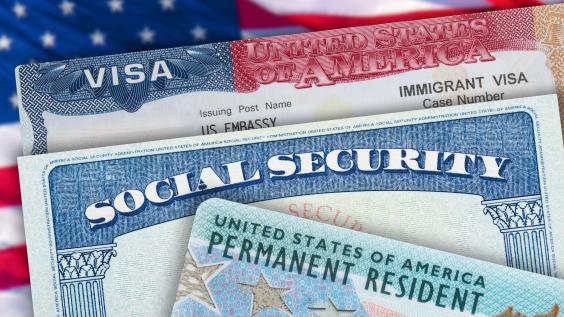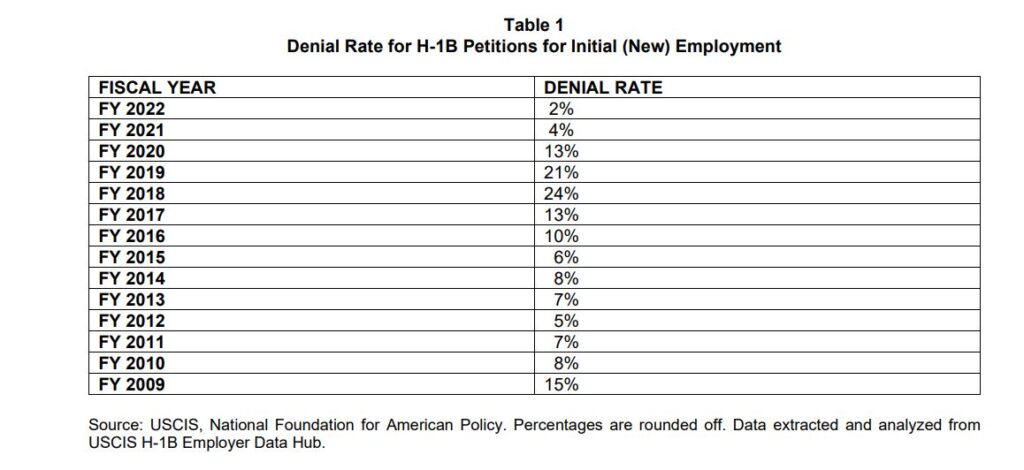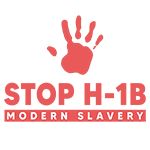Be the first one to receive latest updates.
The H1-B Visa Is Failing, How It Affects The US Economy

The 19th and 20th centuries saw the United States become a world leader in technological innovation thanks to individuals like Thomas Edison and Nikola Tesla despite the animosity between them. Alexander Graham Bell and Elisha Gray helped make leaps in telephony during the late 19th century. Later in the century, Dorothy Vaughn and Roy Clay Sr. made numerous innovations in computer science.
However, throughout the past few decades, experts feel the United States is falling behind other world leaders regarding innovation, with some fearing complete stagnation. Multiple academic studies show that enhanced levels of immigration lead to long-term economic growth for the area where immigrants concentrate.
Why is that the case? Historical patterns show restrictions on immigration harm tech companies, typically restricting growth in jobs and wage increases. Immigrants play a significant role in filling labor shortages in industries essential to the United States economy.
How does this relate to the H-1B visa program? The H1-B guest visa was designed in 1990 as part of the Immigration Act of 1990 to bring skilled professionals to meet labor market shortages, where guest workers are sponsored by employers who submit petitions to bring particular professionals into the country to fill highly skilled roles, with a preference for migrants with advanced university degrees.
While there are approximately 583,420 foreign workers on H-1B visas in the United States, unfortunately, the H-1B visa process is proving to be out of date, easy to exploit, and is proving unsuitable to fill labor market demands within the country. Countries like Canada and the United Kingdom have recently made immigration reforms aimed at attracting highly-skilled young individuals, despite the UK recently leaving the European Union.
The H-1B visa is a three-year renewable work visa, with an annual cap of 65,000 visas, with an additional 20,000 slots for workers with graduate degrees from US universities, a likely helpful feature for recent student graduates if a ‘visa lottery’ system was not in place to select candidates. The 65,000 annual cap was the program’s original number in 1990. The following is a list of the changes in H-1B visa caps since that time.
- 1990: 65,000
- 1999: 115,000 (American Competitiveness and Workforce Improvement Act raised the cap)
- 2001: 195,000 (American Competitiveness in the Twenty-first-century act increased the number)
- 2004: 65,000 + 20,000 for migrants with U.S. masters or higher degree
The lottery system was enacted in 2014 due to a spike in applications, with the United States Citizen and Immigration Services (USCIS) adopting a lottery system to cope with the increase in volume. The lottery system and the structure of the H-1B program gives power to offshore outsourcing recruitment companies, most of which are based in India to file thousands of applications for their employees. These companies make a huge profit by sending the workers who win the lottery to work as contractors for US-based companies.
Allegations of labor abuse run rampant regarding the H1-B visa, with large multinational companies being at the center of wage-theft controversies throughout the history of the program. The non-profit Economic Policy Institute (EPI) dives into a flaw of the H1-B visa program, which sees migrant contract workers put into a different labor category than U.S. workers hired directly as employees by the same company.
…One widely reported example from the last decade illustrates the issue. The IT outsourcing firms Infosys and Tata Consultancy Services contracted with Southern California Edison (SCE), an energy provider, to replace hundreds of SCE employees with H-1B workers who were paid less to do the same jobs, with the U.S. workers being required to first train their H-1B replacements. When filing an H-1B application, one of the things that employers must attest to is that the filings do not adversely impact the wages and working conditions of similarly employed U.S. workers. But DOL [Department of Labor] investigated the case and found no wrongdoing: The outsourcing firms were the ones who had to attest to meeting certain provisions in the visa applications, and the SCE workers who were replaced were not considered part of the “similarly employed U.S. workers” whose wages and working conditions the outsourcing firms had to vouch not to adversely impact.
The EPI report further details wage-theft issues happening through the H-1B visa program, “Since the creation of the program, the abuses of the program have been many, included vastly underpaying workers, laying off U.S. workers and replacing them with much lower-paid H-1B workers, forcing U.S. workers to train their H-1B replacements as a condition of receiving severance and unemployment insurance, and cheating the H-1B lottery to acquire additional visas.” The EPI continues, “There are provisions in the H-1B law that are supposed to work together to prevent employers from underpaying H-1B workers or replacing their incumbent U.S. worker employees (i.e., U.S. citizens or permanent residents) with H-1B workers who are paid much less to do the same job.”
According to the EPI report and a federal whistleblower lawsuit (False Claims Act) against outsourcing firm HCL Technologies (HCL), the third largest of its kind in India, the company ‘systematically’ pays H-1B workers much less than its U.S. Citizen employees. HCL disclosed such payment practices within an internal document EPI was able to review.
Multi-billion dollar corporations are by far the biggest benefactors of the H-1B visa program. E-commerce giant Amazon, digital service consulting company Infosys, and business solutions giant Tata Consultancy Services are at the top of the list according to a new analysis by the National Foundation for American Policy (NFAP).

However, H-1B visa holders’ jobs are not safe, even if they land an opportunity with one of the largest benefactors of the program. Recently over 10,000 Telugu professionals on the H-1B visa were laid off from work. According to data from Layoffs.fyi, approximately 120,253 tech layoffs have occurred within 2023 in the United States — a staggering number compared to the 161,061 layoffs throughout the entirety of 2022.
The layoffs occurred after the tech industry continued to hire at high rates despite the COVID-19 pandemic stagnating the world economy in 2020 and 2021.
With unsure job security for US citizens and migrants, likely gross accounts of wage theft against both parties, and feelings of entrapment for those on the H-1B visa, it remains a question as to what entity the program is actually serving.
For More Follow Us On: Twitter, Facebook, and Check Out Our Youtube
Stop. Listen. Share. A Social Experiment Enterprise.





Leave a Comment